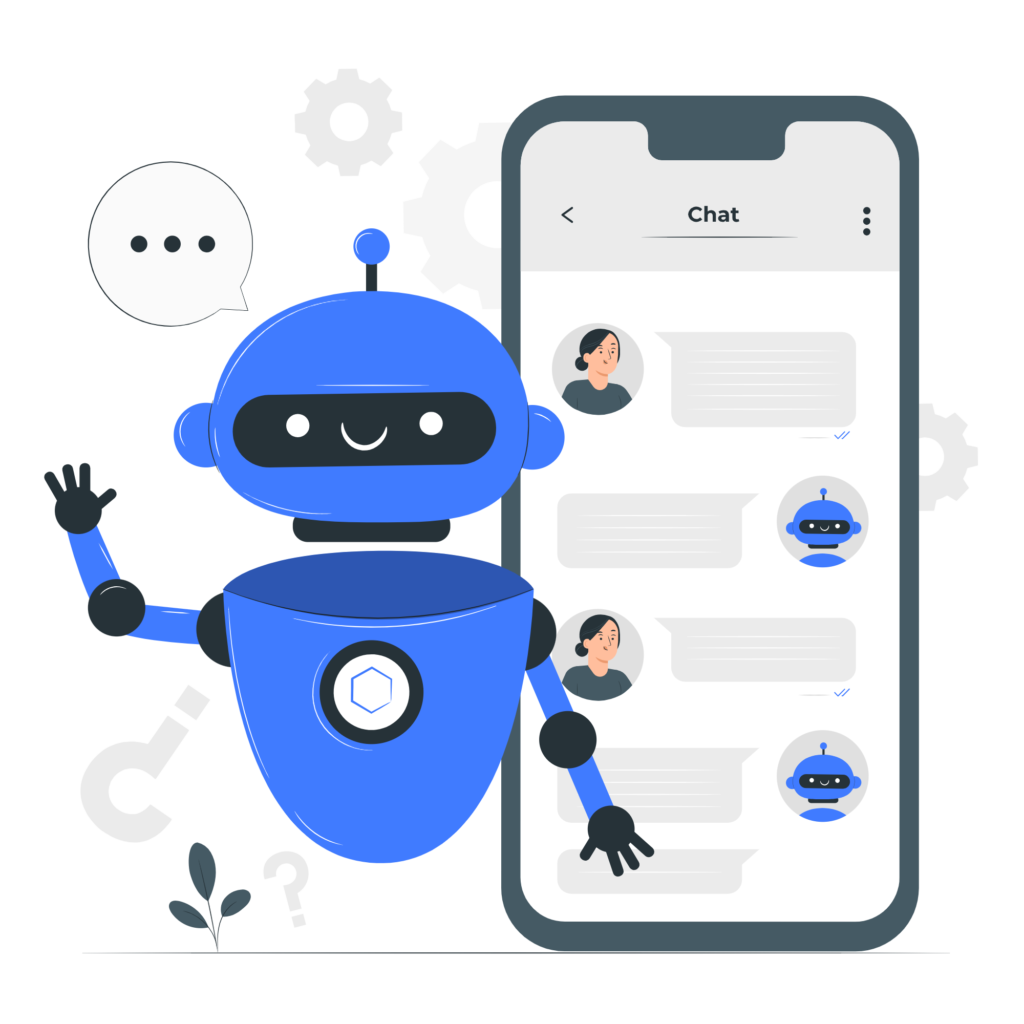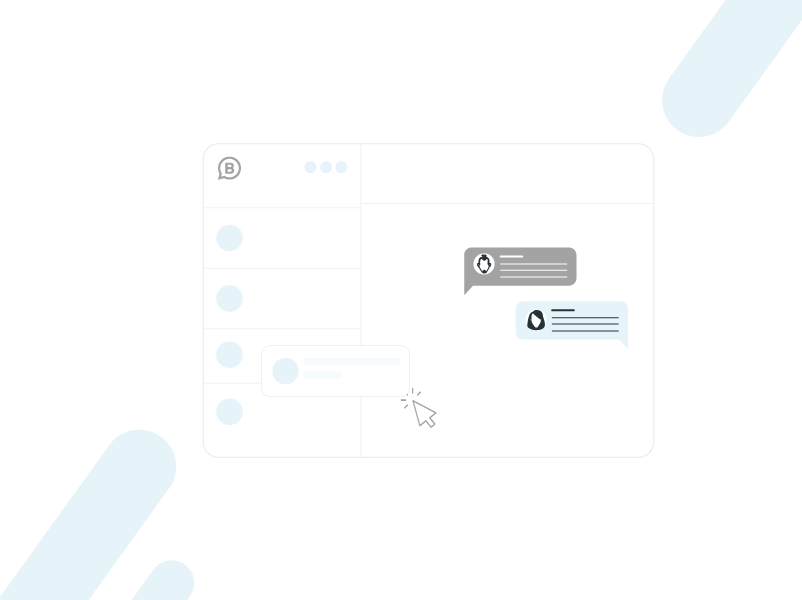WhatsApp Business has become a popular tool for interacting with customers, but managing messages manually can be overwhelming and time consuming. Fortunately, there are automation solutions that can simplify and optimize interactions on WhatsApp for business.
In this article, we explore different levels of automation, from basic autoresponders to interactive bots, and how the Uniboxi tool can help in this process.
To begin we will divide the article into three main topics:
- Simple automations: quick responses.
- Sequence automations.
- Complex automations: bots.
1. Simple Automations
Automated messages are predefined and scheduled responses that are sent automatically in WhatsApp Business. These messages are a powerful tool to streamline business communication and optimize customer interaction. They allow you to provide fast and consistent responses, even when it is not possible to respond immediately.
Examples of simple automations
There are several types of simple automated messages that can be set up to improve communication with customers. Here are some examples
Welcome message
To greet customers when they contact for the first time. This message may include an expression of gratitude for your interest and provide useful information, such as hours of operation or links to relevant resources.
Example: “Welcome to [Company Name]! We appreciate your interest. Our office hours are Monday through Friday from 9 a.m. to 6 p.m. If you have any questions, feel free to write to us. We’re here to help!”
After-hours auto-response
When messages are received after-hours, you can set up an auto-response to inform customers when they will be served. This gives them an immediate response and reassures them that their message has been received.
Example: “Thank you for contacting us! We are currently outside of our office hours. Our team will be happy to answer your questions as soon as possible during our office hours, Monday through Friday from 9am to 6pm. We will get back to you as soon as possible!”
Automatic answers to frequently asked questions
In this case, automatic answers can be configured to provide fast and consistent answers. These responses may include links to additional resources or detailed instructions.
Example: “Hi! Thanks for your question. If you’re looking for information about our pricing, you can find it on our website [link]. If you have any other questions, don’t hesitate to let us know. We’re here to help.”
Thank You Messages
After a successful purchase or interaction with a customer, an automatic thank you message can be scheduled. This shows appreciation and helps strengthen the relationship with the customer.
Example: “Thank you for your purchase at [Company Name]! We value your support and trust in our products/services. If you have any questions or need additional assistance, please do not hesitate to contact us. We hope to see you again soon!”
Benefits of using automated messages
- Immediate response: Customers value prompt responses. With automated messages, an instant response can be guaranteed, even after hours, building trust and commitment to customer service.
- Time saving: Responding individually to each message can be a daunting and time consuming task. Automated messages relieve you of this burden, allowing you to focus on more important tasks.
- Improved customer satisfaction: Automated messages ensure that customers feel cared for and valued.
- Consistent Communication: All responses are guaranteed to be consistent in tone and content. This is especially important when multiple people are responding to messages, as it ensures a unified and professional message.
By using the Uniboxi, it is possible to easily configure automated messages and customize them according to the needs, thus strengthening the image of the company in communication through WhatsApp.
2. Sequence Automations
Automated sequence messages are an effective way to maintain structured and personalized communication with customers throughout different stages or events.
These sequences consist of a series of scheduled messages that are sent automatically according to a predefined sequence. These messages are triggered based on actions, responses, or set time intervals.

Examples of automated messages in sequence
There are different types of automated sequence messages that can be used in business communication. Here are some examples of these messages:
Welcome and Thank You Sequence
Message 1: “Welcome to [Company Name]! We are excited for you to be a part of our community. Here you will find relevant information about our products/services and how we can help you solve your needs. If you have any questions, do not hesitate in writing to us.”
Message 2 (sent after a few days): “We wanted to take this opportunity to thank you for joining [Company Name]. We hope you’ve enjoyed your experience thus far. If you need additional assistance or have any questions, we’re here to help. . Thanks for trusting us!”
Post-purchase follow-up sequence
Message 1 (sent immediately after purchase): “Thank you for your purchase at [Company Name]! We appreciate your support and trust in our products/services. Your order has been received and is being processed. You will soon receive information from tracking so you can track your shipment.”
Message 2 (sent after delivery): “We hope you have received your order from [Company Name]! We want to make sure you are happy with your purchase. If you have any questions or concerns, please don’t hesitate to contact us. We value your opinion!”
Abandoned Cart Reminder Sequence:
Message 1 (sent shortly after the cart was abandoned): “Hello! Looks like you’ve left some products in your shopping cart at [Company Name]. Need help completing your purchase? We’re here to answer your questions.” your questions or provide additional assistance. Don’t miss your chance to get these great products!”
Follow-up sequence of events or webinars:
Message 1 (sent after someone registers): “Thank you for registering for our event/webinar at [Company Name]! We are excited for you to be a part of this experience. More details and reminders will be coming soon to make sure you don’t miss a thing. We hope to see you there!”
Message 2 (sent before event/webinar): “Our event/webinar at [Company Name] is only a few days away! We wanted to remind you that we are looking forward to seeing you. Get ready for valuable information and networking opportunities. If you have If you have any questions, don’t hesitate to contact us. See you soon!”
Benefits of using automated Sequences messages
The importance of automated sequence messages in business communication lies in the following aspects:
- Guide customers in their purchase or interaction process: They allow establishing a step-by-step communication with customers, providing them with relevant information at each stage. They can be guided from the research and consideration phase to the final purchase by providing additional details, testimonials, promotions or special offers.
- Maintain constant communication: They help maintain constant communication with customers, even when there is no active interaction. Some companies set up a series of messages that are sent at regular intervals to keep customers engaged and remind them of a deal.
- Personalize the customer experience: They allow communication to be tailored to the individual needs of each customer, segmenting contact lists and sending specific sequences based on interests, behaviors or demographic characteristics. This creates a personalized experience that shows you care about customers and understand their needs.
- Save time and resources: Instead of having to send messages individually, you can set up the sequence once and let it run automatically. This allows you to focus on other important business tasks.
Uniboxi offers a variety of additional functions and features that can help customize and manage automated message sequences efficiently. We invite you to explore our website and take advantage of these tools to improve business communication with customers.
3. Complex Automations: Interactive Bots
Interactive bots are automated programs that can interact with users through the instant messaging application.
These bots have the ability to access a company’s information, such as databases and product catalogs, to provide quick and accurate responses to user queries. They can provide information on prices, product features, inventory availability, and conduct transactions, such as purchases, without the need for human intervention.
They are efficient tools for improving the customer experience and automating tasks, although it is important to note that they cannot completely replace human interaction in more complex situations or those that require a personalized approach.

Examples of interactive bots
There are different types of interactive bots that can be implemented in WhatsApp Business. Here are some of the more common types:
Customer service bots
Designed to provide automatic responses to frequent customer queries, such as information about products, return policies, opening hours, among others. They can offer basic support and direct users to additional resources or a human agent if more personalized attention is required.
Real-time shipment tracking
A bot can query shipment tracking systems and provide details about a package’s current location, estimated delivery date, itinerary changes, and any delivery issues or delays.
Sales and marketing bots
They focus on guiding users through the buying process and promoting products or services. They can provide detailed information about products, help customers choose appropriate options, and perform transactions, such as taking orders and processing payments.
Technical support bots:
Intended to help users with technical problems or questions related to products or services. They provide solutions to common problems, troubleshooting instructions, and links to additional support resources.
Lead generation bots
They are used to capture contact information and generate leads. They can ask custom questions to collect relevant data, and then send the collected information to a customer management system (CRM) or sales team for follow-up.
Reservations and Scheduling
Help clients book appointments, make restaurant reservations, schedule services, or perform other activities that require scheduling. The bot can check availability, help the customer select a suitable date and time, and make the reservation. Also, you can send automatic reminders before the scheduled appointment or event.
Survey and feedback bots
To collect customer feedback, opinions and data through interactive surveys, to obtain information to improve products, services and customer experience.
Benefits of using interactive bots
- Interactive bots offer a number of benefits for businesses: 24/7 customer support: Interactive bots can be available at all times to answer queries and provide support to customers. In this way, you can have continuous and fast attention, improving customer satisfaction and avoiding the loss of sales opportunities due to lack of response.
- Task automation and time saving: They can also perform repetitive and routine tasks in an automated way. They can provide information about products, services and prices, assist in the purchase process, provide shipping status updates, among others.
- Improved efficiency and scalability: They are capable of serving multiple queries simultaneously, which makes them highly scalable. It doesn’t matter if there are few or many clients, bots can handle the workload efficiently.
- Personalization and segmentation: Bots can collect data about customers as they interact with them, allowing responses to be personalized and offering relevant recommendations or promotions, as well as increasing the chances of generating additional sales.
- Cost reduction: By automating tasks and optimizing customer service, they reduce operating costs, since it is not necessary to hire and train a large team of customer service agents.
In conclusion, the automation of messages in WhatsApp for business offers numerous benefits that can boost the success and efficiency of companies. By implementing this technology, organizations will be able to improve the customer experience, optimize communication and save time and resources, in addition to strengthening the image of the brand.

